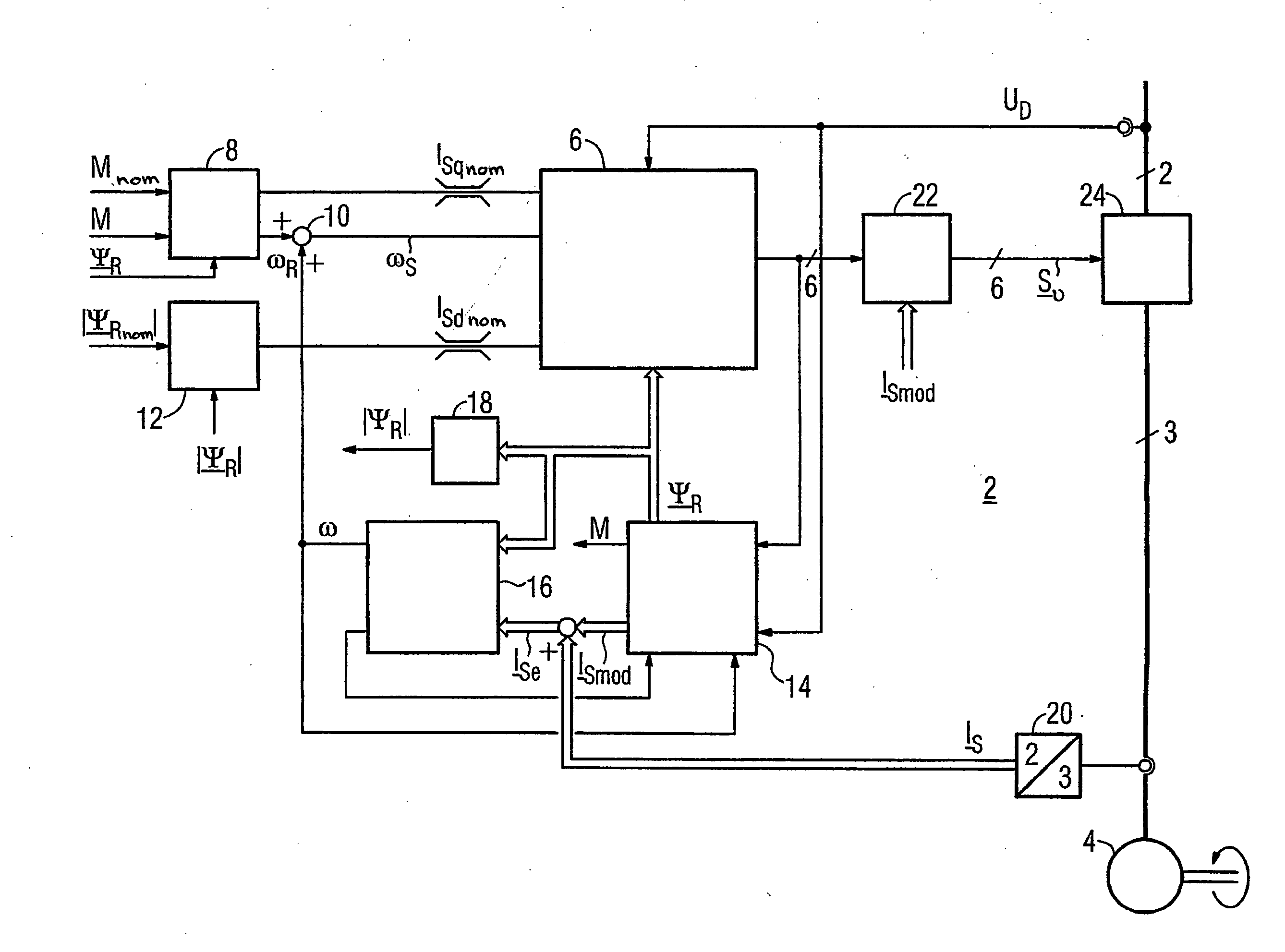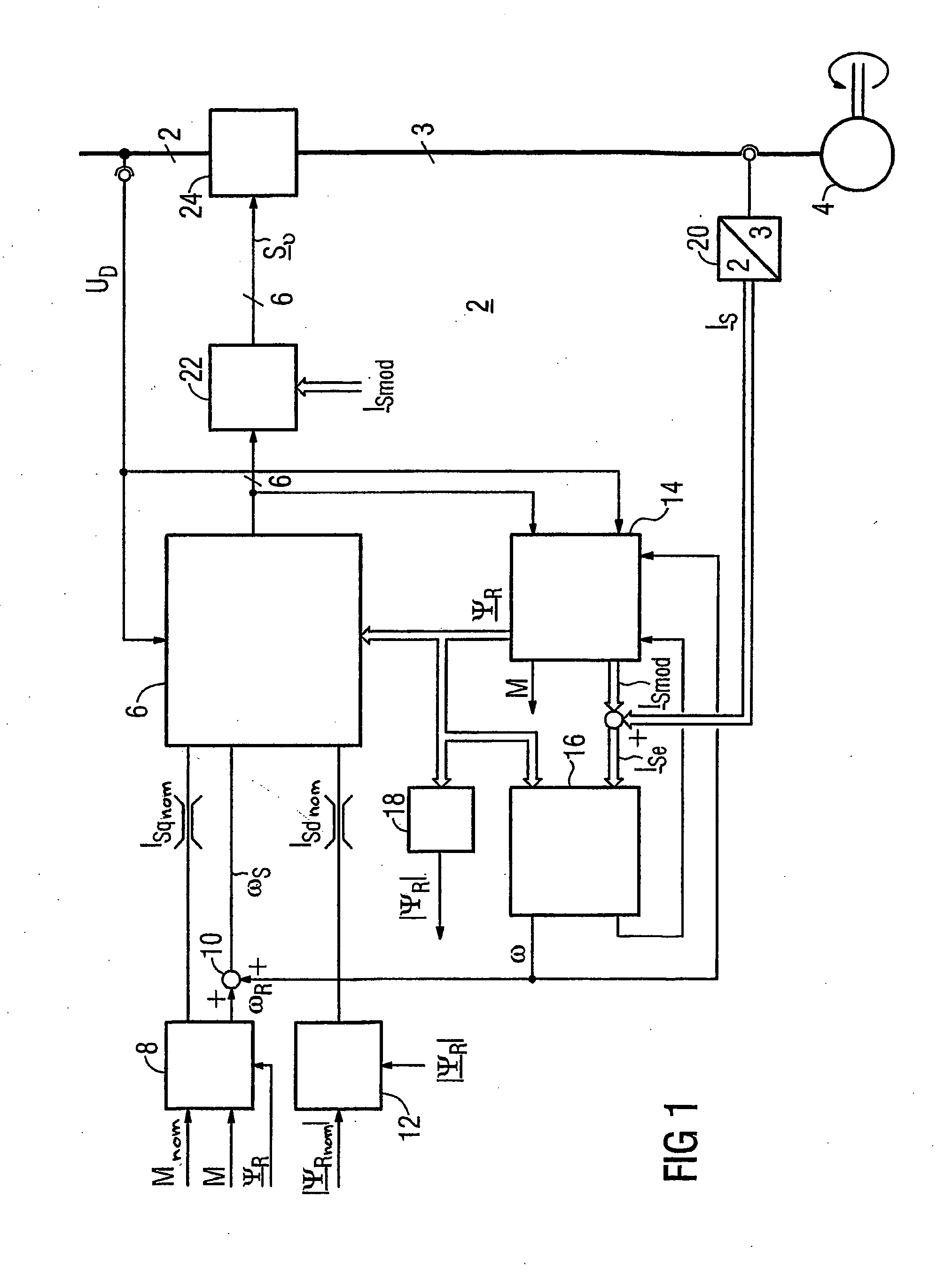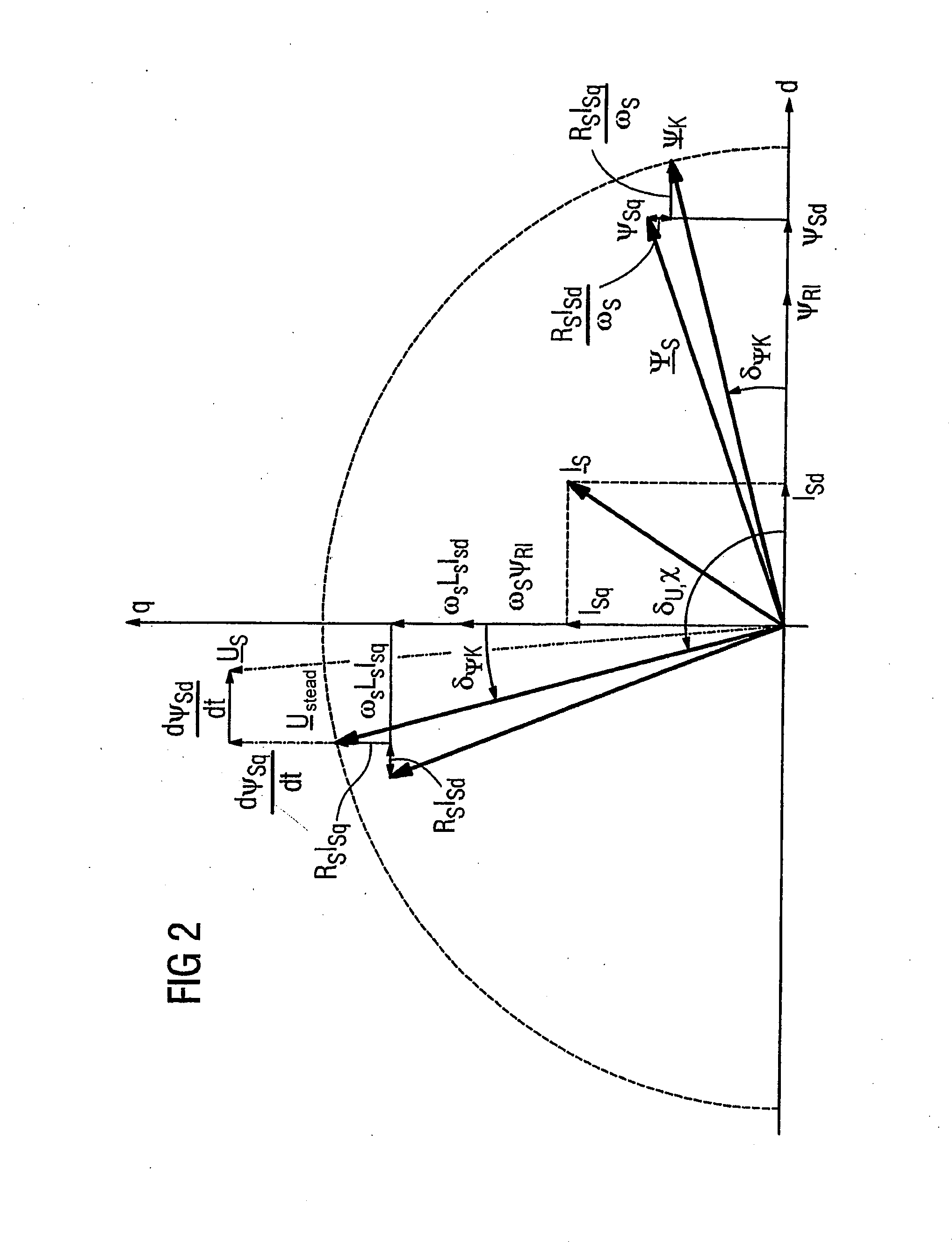Method for Controlled Application of a Stator Current Set Point Value and of a Torque Set Point Value for a Converter-Fed Rotating-Field Machine
a technology of stator current and rotating field machine, which is applied in the direction of electric generator control, dynamo-electric converter control, dynamo-electric gear control, etc., can solve the problems of inability to accurately and highly dynamically control the stator current directly, and the efficiency and cost of the inverter are affected
- Summary
- Abstract
- Description
- Claims
- Application Information
AI Technical Summary
Benefits of technology
Problems solved by technology
Method used
Image
Examples
Embodiment Construction
[0051]In order to ensure clarity, the method according to the invention will be described in the following text using the example of an asynchronous machine.
[0052]FIG. 1 shows a structure of the overall drive control 2 for a rotating-field machine 4 without a rotation speed sensor. The device 6, in particular a microprocessor, is responsible for carrying out a major proportion of the method according to the invention. A voltage time integral, which in this case is referred to as the terminal flux ΨKnom, is in this case calculated as a manipulated variable by means of this device 6 from determined current components ISqnom and ISdnom and a determined stator rotation frequency ωS. The torque-forming current component ISqnom of a stator current set point value ISnom to be applied is calculated by means of a torque controller 8 as a function of a torque set point value Mnom, a determined rotor flux actual value ΨR and a torque actual value M. In addition, a rotor slip frequency ωR is pr...
PUM
 Login to View More
Login to View More Abstract
Description
Claims
Application Information
 Login to View More
Login to View More - R&D
- Intellectual Property
- Life Sciences
- Materials
- Tech Scout
- Unparalleled Data Quality
- Higher Quality Content
- 60% Fewer Hallucinations
Browse by: Latest US Patents, China's latest patents, Technical Efficacy Thesaurus, Application Domain, Technology Topic, Popular Technical Reports.
© 2025 PatSnap. All rights reserved.Legal|Privacy policy|Modern Slavery Act Transparency Statement|Sitemap|About US| Contact US: help@patsnap.com



